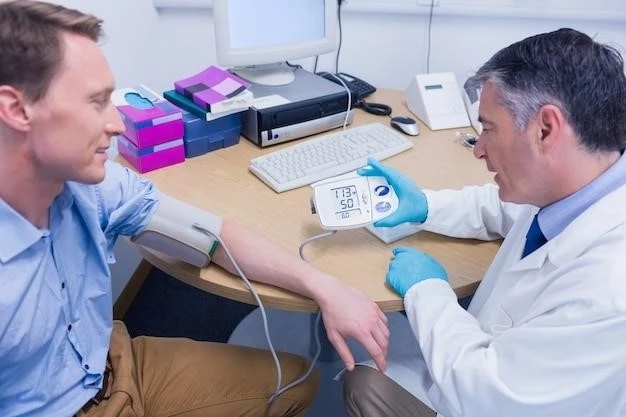Introduction
A teratoma is a rare type of tumor that can contain various tissues such as hair, teeth, and bone. Learn about its characteristics and impacts on the human body.
Definition of Teratoma
A teratoma is a type of tumor that can contain a diverse array of tissues, including hair, teeth, muscle, and bone. These tumors can be benign or malignant and typically arise from germ cells or germ layers during early embryonic development.
Teratomas are rare tumors that can contain tissues such as hair, teeth, muscle, and bone. They may arise from germ cells and can be found in various parts of the body, including the ovaries, testicles, and mediastinum. Understanding the characteristics and clinical implications of teratomas is crucial for accurate diagnosis and appropriate treatment strategies.
Types of Teratomas
Teratomas can be classified into various types, including mature teratoma, immature teratoma, cystic teratoma, and dermoid cyst. Each type presents unique characteristics and may arise in different parts of the body.
Overview of Teratomas
Teratomas are rare tumors that can contain tissues such as hair, teeth, muscle, and bone. They may arise from germ cells and can be found in various parts of the body, including the ovaries, testicles, and mediastinum. Understanding the characteristics and clinical implications of teratomas is crucial for accurate diagnosis and appropriate treatment strategies.
Immature Teratoma
An immature teratoma is a subtype of teratoma that may exhibit aggressive growth patterns and have the potential to invade surrounding tissues and metastasize. These tumors contain less-differentiated cells compared to mature teratomas, posing challenges in treatment and prognosis assessment.
A cystic teratoma is a type of germ cell tumor that contains well-differentiated tissues developed from three germ cell layers ‒ ectoderm, mesoderm, and endoderm. These tumors can present in various body parts and may exhibit a range of characteristics and clinical implications based on their composition and location within the body.
Dermoid Cyst
A dermoid cyst, also known as a mature teratoma, is a type of tumor that can contain tissues such as hair, teeth, muscle, and bone. These cysts are typically benign and may arise in various parts of the body, including the ovaries. Understanding the characteristics and implications of dermoid cysts is essential for accurate diagnosis and management.

Teratoma Characteristics
Teratomas consist of diverse tissues, such as hair, muscle, teeth, or bone, originating from germ cells or germ layers during embryonic development. They exhibit unique growth patterns and implications.
Cystic Teratoma
A cystic teratoma is a type of germ cell tumor that contains well-differentiated tissues developed from three germ cell layers ‒ ectoderm, mesoderm, and endoderm. These tumors can present in various body parts and may exhibit a range of characteristics and clinical implications based on their composition and location within the body.
Growth Patterns
Teratomas exhibit unique growth patterns characterized by the presence of diverse tissues such as hair, muscle, teeth, and bone. These tumors may arise from germ cells and can develop in various body parts, showcasing a mix of differentiated and undifferentiated cell types. Understanding the growth patterns of teratomas is essential for accurate diagnosis and effective treatment strategies.
Teratomas can occur in various locations within the body, including the ovaries, testicles, mediastinum, tailbone, and other regions. The specific location of a teratoma can impact its characteristics, clinical manifestations, and treatment options, highlighting the importance of recognizing the predilection of teratomas in different anatomical sites.

Clinical Features
Teratomas can manifest with various symptoms depending on their location and tissue composition. Diagnosis and treatment play a crucial role in managing the clinical outcomes of individuals affected by these tumors.
Location Predilection
Teratomas can occur in various locations within the body, including the ovaries, testicles, mediastinum, tailbone, and other regions. The specific location of a teratoma can impact its characteristics, clinical manifestations, and treatment options, highlighting the importance of recognizing the predilection of teratomas in different anatomical sites.
Diagnostic Methods
Diagnosing teratomas often involves a combination of imaging studies such as ultrasound, CT scans, and MRI, as well as laboratory tests to assess tumor markers. Biopsy or surgical excision may be necessary for definitive diagnosis. Understanding the diagnostic methods for teratomas is crucial for accurate identification and appropriate management of these tumors.
Prognosis and Treatment
The prognosis and treatment of teratomas depend on various factors, including the tumor’s location, size, and whether it is benign or malignant. Treatment options may include surgery, chemotherapy, and radiation therapy, tailored to the individual’s condition and overall health. Prognosis can vary, emphasizing the importance of early detection and appropriate management to improve outcomes in patients with teratomas.
Teratoma in Different Body Parts
Teratomas can affect various body parts, including the ovaries, testicles, mediastinum, tailbone, and more. Understanding their impacts on different anatomical sites is crucial for accurate diagnosis and treatment.
Ovarian Teratomas
Ovarian teratomas are germ cell tumors that can develop in women, primarily in the ovaries. These tumors may contain tissues derived from multiple germ cell layers. Understanding the characteristics and implications of ovarian teratomas is crucial for appropriate diagnosis and management.
Testicular Teratomas
Testicular teratomas are germ cell tumors that can develop in the testicles, composed of various somatic tissues derived from germinal layers. These tumors are classified based on their histological features and can affect male reproductive health. Understanding the characteristics and management of testicular teratomas is essential for optimal patient care.
Mediastinal Teratomas
Mediastinal teratomas are rare tumors that develop in the mediastinum, the central cavity of the chest. These tumors can contain tissues from different germ cell layers and may present unique challenges in diagnosis and treatment due to their location. Understanding the characteristics and implications of mediastinal teratomas is essential for providing appropriate care to individuals affected by these tumors.
Research and Case Studies
Explore the latest advancements in teratoma research, including insights into tumor biology, novel diagnostic methods, and emerging treatment modalities. Discover compelling case studies showcasing innovative surgical interventions and multidisciplinary approaches for managing teratomas.
Recent Advances in Teratoma Research
Advancements in teratoma research have focused on exploring the tumor biology, identifying novel diagnostic techniques, and developing innovative treatment strategies. Recent studies have delved into understanding the cellular origins and growth patterns of teratomas, leading to improved diagnostic accuracy and treatment outcomes. Additionally, emerging research highlights the potential of targeted therapies and personalized medicine approaches in managing teratoma cases. Stay informed about the latest developments in teratoma research to enhance clinical care and patient outcomes.
Case Studies and Surgical Interventions
Exploring case studies of teratoma patients and the surgical interventions implemented provides valuable insights into individualized treatment approaches and outcomes. These studies showcase the complexities of managing teratomas and highlight the importance of multidisciplinary collaboration in delivering optimal care to patients with these unique tumors.
